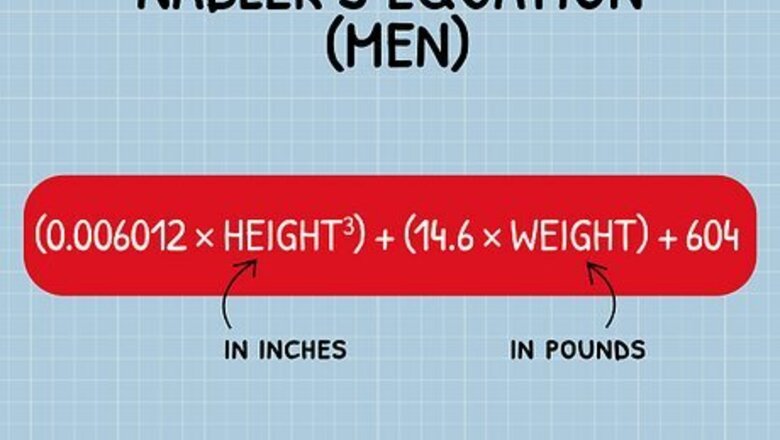
views
X
Research source
There are several different ways to calculate your blood volume, and they may give slightly different answers, but they should not differ greatly.[2]
X
Trustworthy Source
PubMed Central
Journal archive from the U.S. National Institutes of Health
Go to source
Calculating Your Blood Volume as a Man
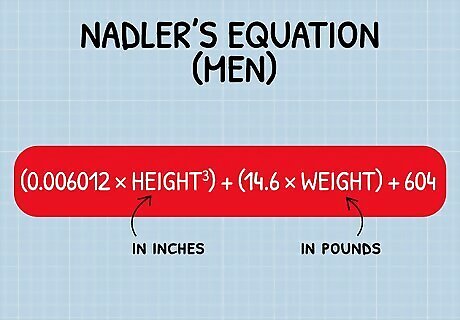
Use Nadler’s equation. This method calculates your total blood volume in milliliters. To perform the calculation, you will need your height in inches and your weight in pounds. The formula is: (0.006012 x Height 3 {\displaystyle ^{3}} ^{3})+(14.6 x Weight)+604. If you have your height in centimeters and your weight in kilograms, you will first need to convert them to inches and pounds, respectively. 1 centimeter is 0.39 inches. 1 kilogram is 2.2 pounds. Calculate the height function of the formula. Cube your height in inches and then multiply it by 0.006012. Calculate the weight function. Multiply your weight in pounds by 14.6. Add the height function to the weight function. Add 604.
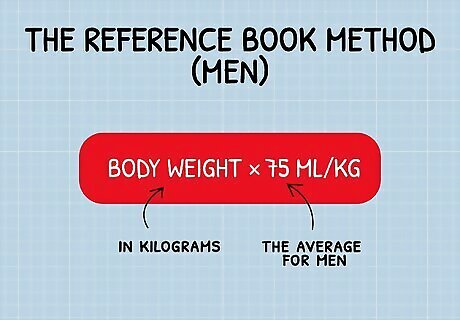
Estimate your total blood volume. This method uses the average number of milliliters of blood per kilogram of body weight that a man has. This method is also called the reference book method. Your weight should be in kilograms. If you need to convert pounds to kilograms, 1 pound is 0.45 kilograms. Multiply your body weight in kilograms times the average for men: 75 milliliters of blood per kilogram. This will give you your estimated blood volume in milliliters.
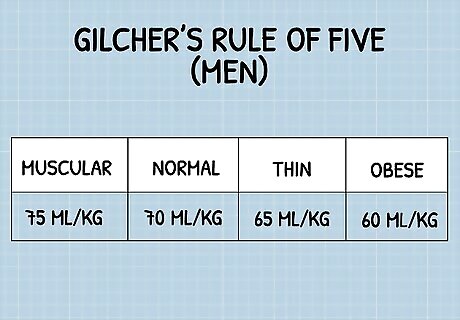
Make adjustments using Gilcher’s Rule of Five if needed. Not all types of tissue have the same amount of blood in them. This means that if a person is obese or very thin, it will influence the accuracy of the calculations. Gilcher’s Rule of Fives makes adjustments for this in the estimated amount of blood per kilogram of body weight. If you know your weight in pounds, convert it to kilograms by multiplying by 0.45. Then multiply your body weight in kilograms by one of these values to get your estimated total blood volume in milliliters: Muscular men have 75 mL of blood per kilogram of body weight. Normal men have 70. Thin men have 65. Obese men have 60.
Calculating Your Blood Volume as a Woman
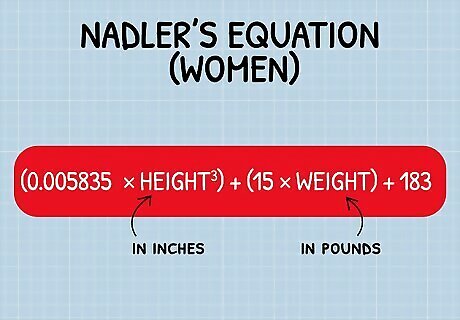
Applying Nadler’s equation. The result will be your total blood volume in milliliters. In order to accurately do the calculation, you need to put your height in inches and your weight in pounds into the following formula: (0.005835 x Height 3 {\displaystyle ^{3}} ^{3})+(15 x Weight) +183. You can convert your height in centimeters and your weight in pounds to inches and kilograms. 1 centimeter is 0.39 inches. 1 kilogram is 2.2 pounds. If you already have your information in inches and kilograms, then you can skip this step. Calculate the height function. Cube your height in inches and then multiply it by 0.005835. Calculate the weight function. Multiply your weight in pounds by 15. Add the height function to the weight function. Add 183.
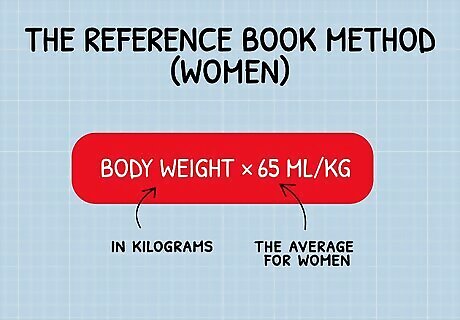
Estimate your total blood volume. This method is based on the average value of milliliters of blood per kilogram of body weight that women have. Your weight should be expressed in kilograms. If you need to convert pounds to kilograms, 1 pound is 0.45 kilograms. Multiply your body weight in kilograms times the average for women: 65 milliliters of blood per kilogram. This will give you your estimated blood volume in milliliters.
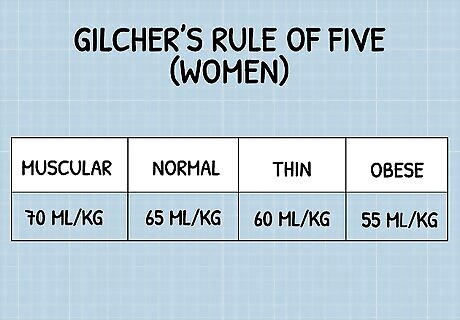
Make corrections using Gilcher’s Rule of Five. The amount of blood in fat and muscle is differs. This means that your fitness level can cause you to deviate from the averages. Gilcher’s Rule of Fives corrects this by adjusting the estimated amount of blood per kilogram of body weight. If you know your weight in pounds, convert it to kilograms by multiplying by 0.45. Then multiply your body weight by these averages according to your body condition: Muscular women have 70 mL of blood per kilogram of body weight. Normal women have 65. Thin women have 60. Obese women have 55.
Calculating Your Child’s Blood Volume Based on Age
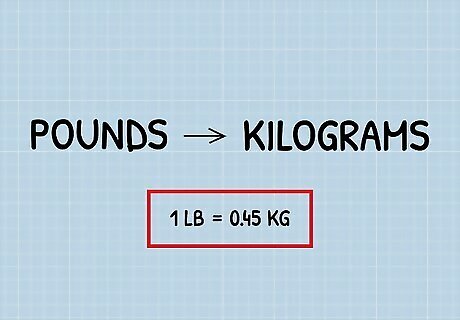
Weigh the child. Use a scale that will give you the value in kilograms. Because children’s weights change rapidly, especially right after birth, it is important to have an up-to-date weight. If your scale gives the weight in pounds, then you will need to covert the values to kilograms. Otherwise the answer will not be accurate. 1 pound equals 0.45 kilograms.
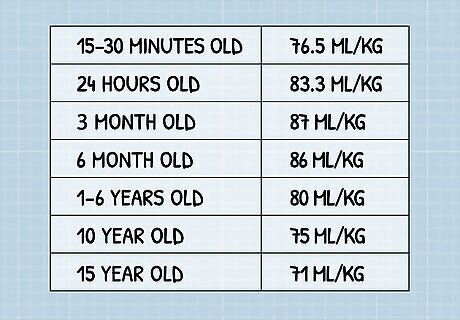
Determine the average blood volume per weight. If you know the child’s age, you can use these values: A newborn that is only 15 to 30 minutes old will have an average blood volume of 76.5 milliliters of blood per kilogram. A newborn that is 24 hours old has 83.3 milliliters per kilogram. A three month old has 87 milliliters per kilogram. A six month old has 86 milliliters per kilogram. A child one to six years old has 80 milliliters per kilogram. A ten year old has 75 milliliters per kilogram. A fifteen year old has 71 milliliters per kilogram. As teens reach adult sizes and proportions, their blood volume will be the same as that of adults.
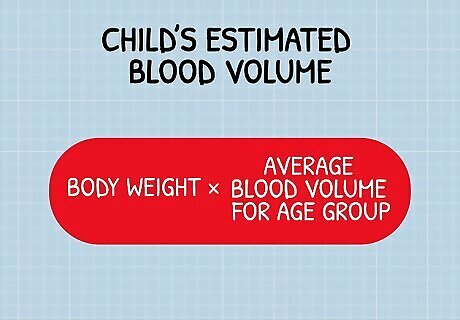
Calculate the blood volume. Multiply your child’s weight times the average value for his or her age group. The result will be your child’s estimated blood volume. The values may differ slightly when you use a different method of calculation. The accuracy of the calculations may also vary slightly based on whether these averages were calculated from a population that is similar in body side and growth patterns to your child.















Comments
0 comment